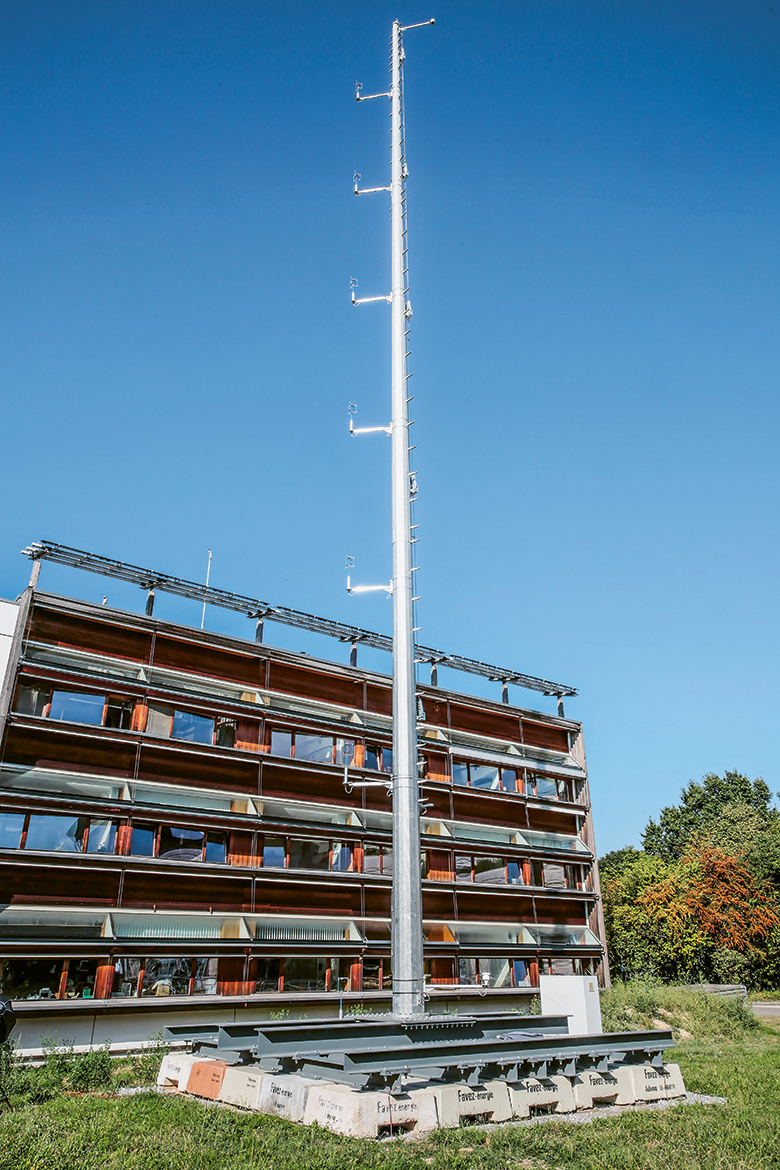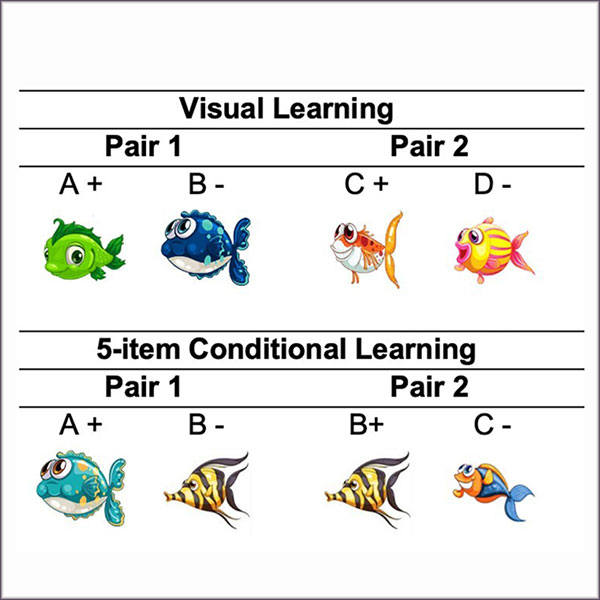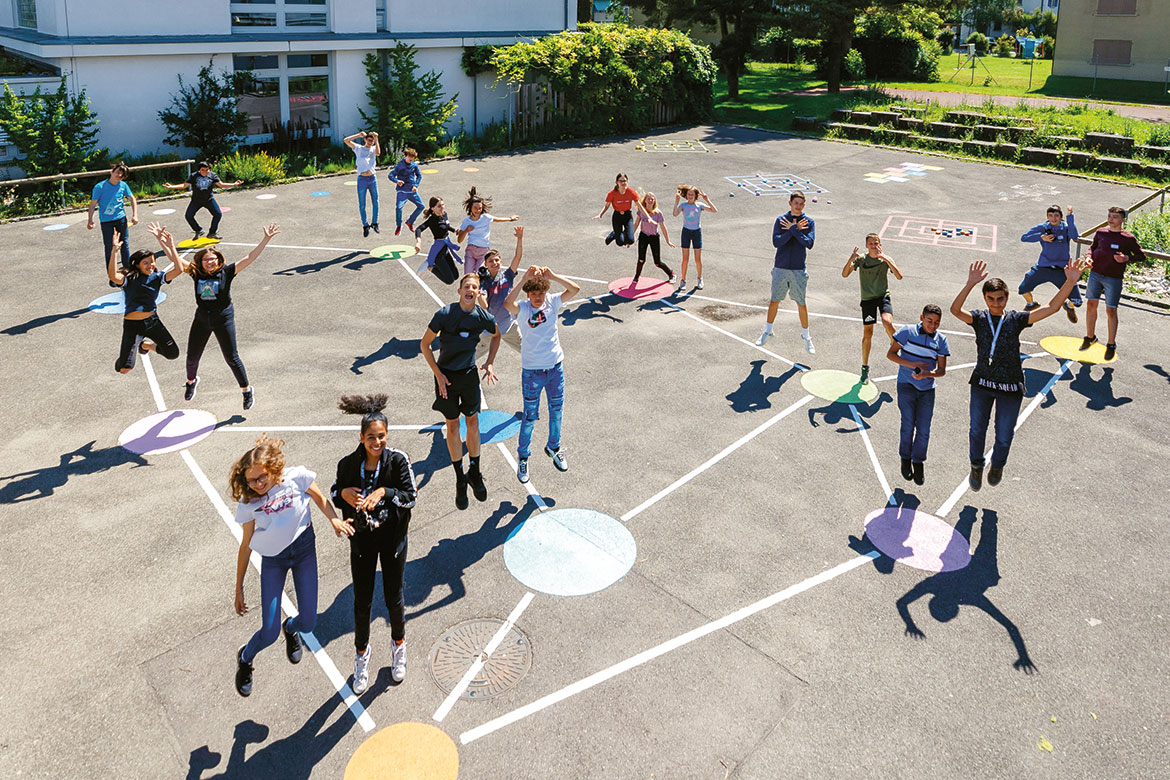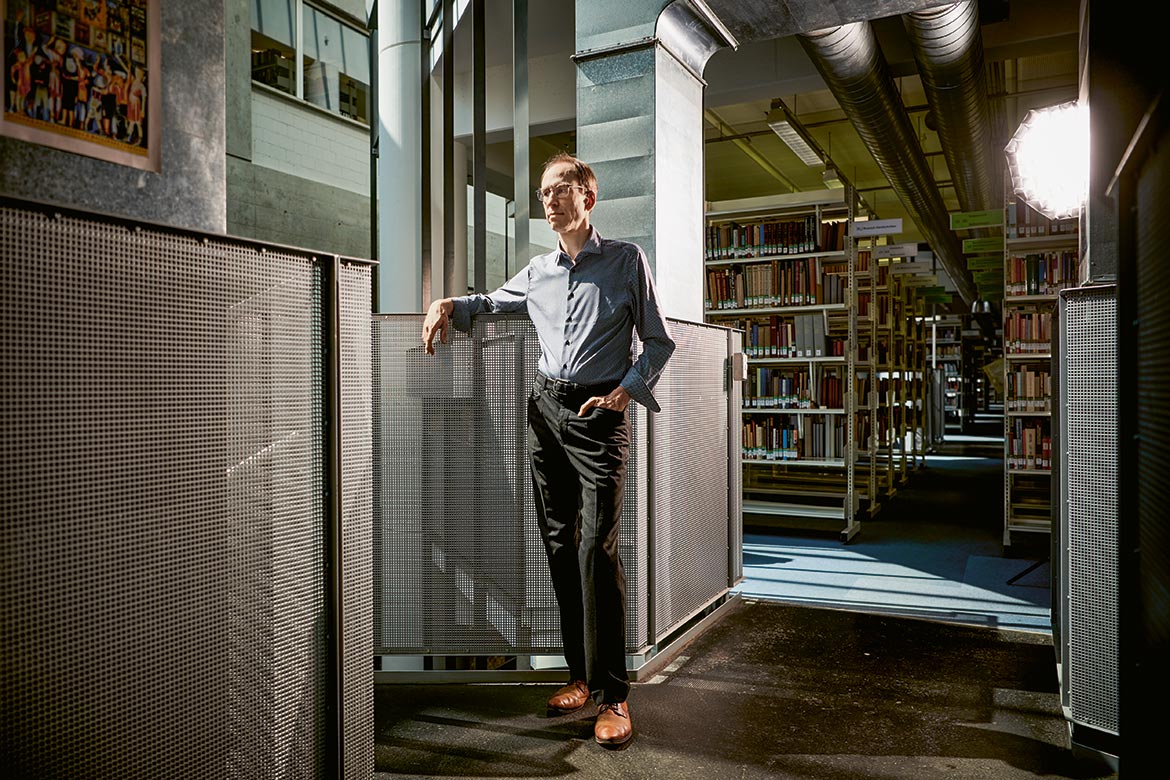Machine learning for predicting winds in urban areas
Thanks to artificial intelligence, scientists can easily and quickly model the trajectory of winds in cities.

Measuring the wind at different heights: the EPFL campus here serves as a model for urban canyons. | Image: Dasaraden Mauree, EPFL
As with natural structures, cities also influence the trajectory and speed of winds. This subject is not insignificant: winter breezes affect the energy consumption of buildings, and during summer heat waves, air circulation is crucial for our thermal comfort. Building height, street width, the arrangement of trees and street furniture ... if the interaction of these elements could be optimised in terms of wind, our cities would be more environmentally friendly and more pleasant to live in.
At EPFL, Jean-Louis Scartezzini’s team is developing a new way of predicting the course of winds in an urban canyon – a street where multi-storey buildings line up on either side. They measured the winds at different heights for an entire year on a street on the EPFL campus. These measurements were fed into an artificial intelligence model. Thanks to machine-learning technologies, the team was able to model air currents more quickly and easily. “Traditional models require an accurate representation of the environment and high computing power”, says the first author Dasaraden Mauree. “Our system doesn’t need this information. It takes us less than an hour on a simple laptop to model a year’s worth of wind on a street”.
The new approach has yet harness the precision of traditional models, but the results are already very encouraging. The next step is to use surveys conducted in Basel to adjust the model and generalise it.




